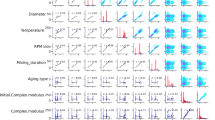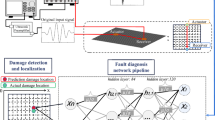Abstract
The paper presented herein aims at providing explicit formulations for predicting the load-carrying capacity of the single adhesive anchors post-installed into uncracked hardened concrete. For this purpose, the worldwide database for the adhesive anchors compiled by the ACI Committee 355 was obtained and reduced to generate the training and the testing data sets to construct the closed-form solutions by means of the soft computing techniques such as Neural Network (NN) and Genetic Programming (GEP). Therefore, the NN and GEP models were developed with a correlation coefficient of as high as 0.99 and 0.95, respectively. Moreover, the mean absolute percentages of errors for the proposed models were fairly reasonable considering the noisy nature of the database. The prediction performance of the developed models improved with increase in the embedment depth, anchor diameter, and the concrete strength. The ratio of predicted to observed values for the developed NN and GEP models were much smaller than that of the well known Concrete Capacity Design (CCD) method which generally overpredicted the experimental values.










Similar content being viewed by others
References
Gesoğlu M, Özturan T, Özel M, Güneyisi E (2005) Tensile behavior of post-installed anchors in plain and steel fiber-reinforced normal-and high-strength concretes. ACI Struct J 102(2):224–231
McVay MC, Cook RA, Krishnamurthy K (1996) Pullout simulation of post-installed chemically bonded anchors. J Struct Eng 122(9):1016–1024
Cook RA, Kunz J, Fuchs W, Konz RC (1998) Behavior and design of single adhesive anchors under tensile load in uncracked concrete. ACI Struct J 95(1):9–26
Cook RA, Konz RC (2001) Factors influencing bond strength of adhesive anchors. ACI Struct J 98(1):76–86
Cook RA (1993) Behavior of Chemically bonded anchors. J Struct Eng 119(9):2744–2762
Cook RA, Doerr GT, Klingner RE (1993) Bond stress model for design of adhesive anchors. ACI Struct J 90(5):514–524
Higgins CC, Klingner RE (1998) Effects of environmental exposure on the performance of cast-in-place and retrofit anchors in concrete. ACI Struct J 95(5):506–517
Fujikake K, Nakayama J, Sato H, Mindess S, Ishibashi T (2003) Chemically bonded anchors subjected to rapid pullout loading. ACI Mater J 100(3):246–252
Klingner RE, Mendonca JA (1982). Tensile capacity of short anchor bolts and wlded studs: a literature review. ACI J Proc79(4):270–279
Primavera E, Pinelli J, Kalajian JE (1997) Tensile behavior of cast-in-place and undercut anchors in high strength concrete. ACI Struct J 94(5):583–594
ACI Committee 349 (1997) Code requirements for nuclear safety related structures (ACI 349–85) (Revised 1990) (Reapproved 1997). American Concrete Institute, Farmington Hills, Mich
Fuchs W, Eligehausen R, Breen JB (1995) Concrete capacity design (CCD) approach for fastening to concrete. ACI Struct J 92(1):73–94
ACI Committee 355 (1997) State of art report on anchorage to concrete (ACI 355.1R-91) (Reapproved 1997). American Concrete Institute, Farmington Hills, Mich
Gesoğlu M (1998) Load-deflection behavior of high strength concrete anchors under static and cyclic tension, and shear loading. MS Thesis, Bogazici University, Istanbul
Özel M (1998) Load-deflection behavior of concrete anchors in tension. MS Thesis, Bogazici University, Istanbul
ACI 318–02 (2002) Building code requirements for structural concrete (ACI 318–02) and commentary (ACI 318R–02). American Concrete Institute, Farmington Hills, Mich
Sakla SSS, Ashour AF (2005) Prediction of tensile capacity of single adhesive anchors using neural networks. Comput Struct 83:1792–803
Oh JW, Lee IW, Kim JT, Lee GW (1999) Application of neural networks for proportioning of concrete mixes. ACI Mater J 96(1):61–67
Yeh IC (1998) Modeling of strength of high performance concrete using artificial neural networks. Cement Concrete Res 28(12):1797–1808
Yeh IC (1999) Design of high performance concrete mixture using neural network and nonlinear programming. J Comput Civil Eng 13(1):36–42
Hong-Guang N, Ji-Zong W (2000) Prediction of compressive strength of concrete by neural networks. Cement Concrete Res 30(8):1245–1250
Lee S-C (2003) Prediction of concrete strength using artificial neural networks. Eng Struct 25(7):849–857
Dias WPS, Pooliyadda SP (2001) Neural networks for predicting properties of concretes with admixtures. Construct Build Mater 15(8):371–379
Goh ATC (1995) Prediction of ultimate shear strength of deep beams using neural networks. ACI Struct J 92(1):28–32
Sanad A, Saka MP (2001) Prediction of ultimate shear strength of reinforced concrete deep beams using neural networks. J Struct Eng–ASCE 127(7):818–828
Baykasoglu A, Dereli T, Tanıs S (2004) Prediction of cement concrete using soft computing techniques. Cement Concrete Res 34:2083–2090
Yang Y, Soh CK (2002) Automated optimum design of structures using genetic programming. Comput Struct 80:1537–1546
Ashour AF, Alvarez LF, Toropov VV (2003) Empirical modeling of shear strength RC deep beams by genetic programming. Comput Struct 81:331–338
Zadeh LA (1994) Soft computing and fuzzy logic. IEEE Software 11(6):48–56
Alexhander I, Morton H (1993) Neurons and symbols: the staff that mind is made of. Chapman and Hall, London
Arbib MA (1995) The handbook of Brain theory and neural networks. MIT Press, Cambridge, MA
Anderson JA (1995) An introduction to neural networks. A bradford Book. MIT Press, Cambridge, MA
Birinci F, Tigdemir M, Demir F (2001) Prediction of concrete compressive strength using artificial neural Networks. In: Proc. of symposium of modern methods, Istanbul, 2001
Öztas A, Pala M, Özbay E, Kanca E, Çaglar N, Asghar Bhatti M (2005) Predicting the compressive strength and slump of high strength concrete using neural network. Construct Build Mater 20(9):769–775
Pala M (2006) A new formulation for distortional buckling stress in cold-formed steel members. J Construct Steel Res 62:716–722
Wang D (1993) Pattern recognition: neural networks in perspective. IEEE Expert 8: 52–60
Nielsen DH (1988) Neurocomputing: picking the human brain. IEEE Spectrum 25(3):36–41
Kohonen T (1988) An introduction to neural computing. Neural Networks 1:3–16
Al-Tabtabai H, Alex PA (1999) Using genetic Algorithm to solve optimization problems in construction. Eng Construct Architect Manage 6(2):121–132
Ferreira C (2002) Gene expression programming: mathematical modeling by an artificial intelligence, 2002
Goldberg D (1989) Genetic algorithms in search, optimization and machine learning. Addison-Welsley, Reading, MA
Miles JC, Sisk GM, Moore CJ (2001) The conceptual design of commercial buildings using a genetic algorithm. Comput Struct 79:1583–92
Chang WT, Hao H (2001) An application of genetic algorithm to precast production scheduling. Comput Struct 79:1605–16
Hagan MT, Demuth HB, Beale MH (1996) Neural network design. PWS Publishing Company, Boston, MA
Ferreira C (2001) Gene Expression programming: a new adaptive algorithm for solving problems. Complex Syst 13(2):87–129
Acknowledgements
The authors would like to thank to Professor Ashour for providing the database of adhesive anchors. Professor Cook maintains this database on behalf of the ACI Committee 355. Assistance of Dr. Murat Pala and Dr. Erdogan Özbay are also gratefully acknowledged.
Author information
Authors and Affiliations
Corresponding author
Rights and permissions
About this article
Cite this article
Gesoğlu, M., Güneyisi, E. Prediction of load-carrying capacity of adhesive anchors by soft computing techniques. Mater Struct 40, 939–951 (2007). https://doi.org/10.1617/s11527-007-9265-6
Received:
Accepted:
Published:
Issue Date:
DOI: https://doi.org/10.1617/s11527-007-9265-6




